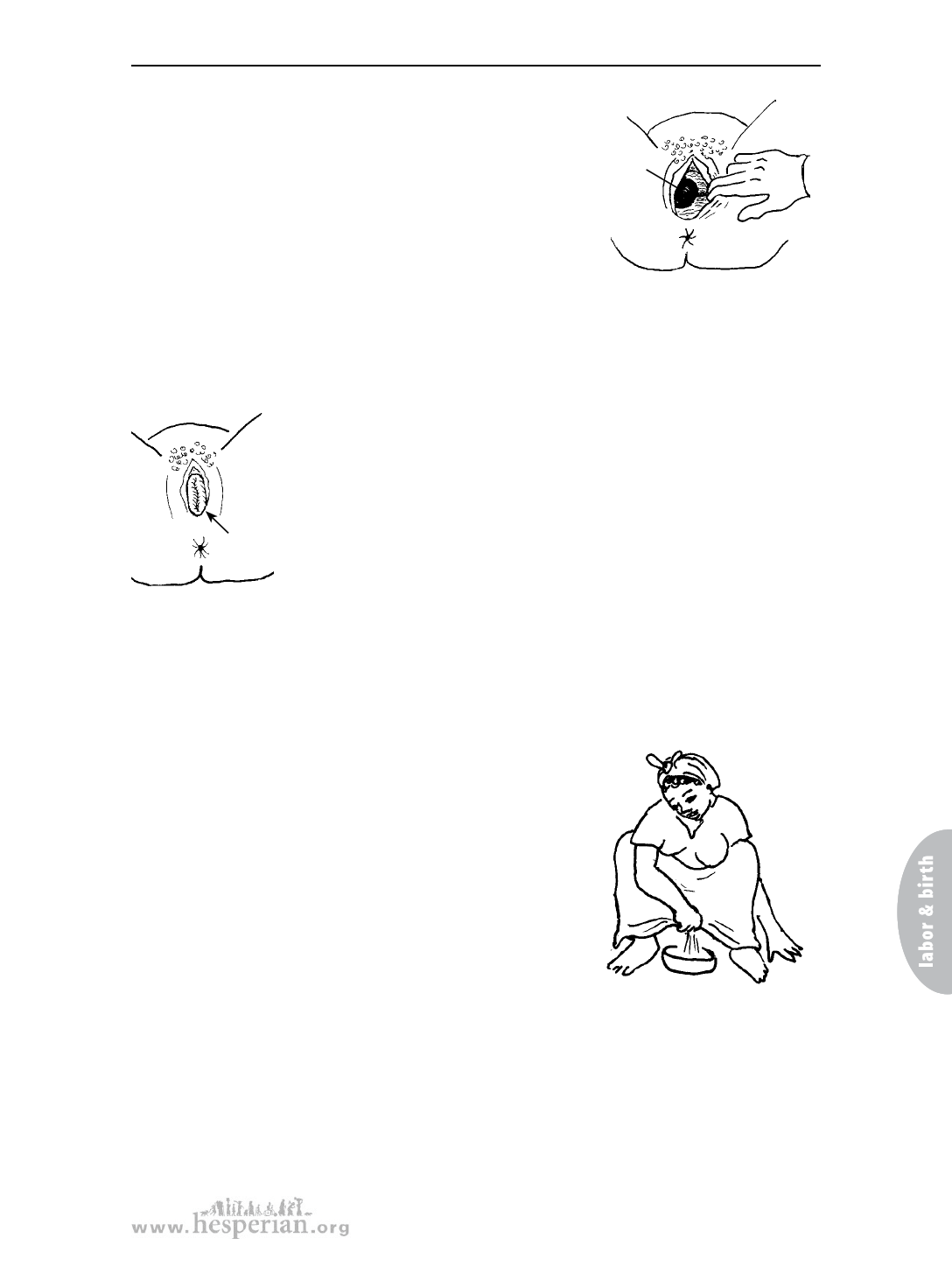
What to do for the mother
Although a hematoma is painful, it is usually not
serious unless it gets very large. If the hematoma is
growing, press on the area with sterile gauze for
hematoma
30 minutes or until it stops growing. If the mother
has signs of shock, treat her for shock (see page 239)
and get medical help so the blister can be opened and
the trapped blood can come out. If you know how, you
can drain it yourself by opening it with a sterile scalpel.
After draining, put pressure on the area with a sterile
gauze until the bleeding stops.
If the cervix can be seen at the opening of the vagina
cervix
If you can see the cervix at the vaginal opening after childbirth,
the womb has prolapsed into the vagina. This problem is not
dangerous, and the cervix will usually go back up inside the
mother in a few days. You may be able to push the womb
farther in with a gloved hand. Help the mother raise her hips
so that they are higher than her head. Ask her to do squeezing
exercises (see page 44) at least 4 times a day.
Watch her closely for signs of infection during the next
2 weeks (see pages 271 and 272).
If the cervix stays at the vaginal opening for a month or more, the mother
should get medical advice. A cervix that stays prolapsed can cause problems when
the woman has another child.
Help the mother urinate
A full bladder can cause bleeding and other problems.
A mother’s bladder will probably be full after birth, but
she may not feel the need to urinate. Ask her to urinate
within the first 2 to 3 hours. If she is too tired to get up
and walk, she can squat over a bowl on the bed or on
the floor. She can also urinate into a towel or thick
cloth while lying down. If she cannot urinate, it may
help to pour clean, warm water over her genitals while
she tries.
If the mother cannot urinate after 4 hours:
1. Check her bladder (see page 161). If it is not full,
help her drink fluids.
A mother should try to
urinate soon after the birth.
2. See page 352 for ways to help a woman urinate.
3. If she still cannot urinate, she may need to have a catheter inserted (see
page 352). If you have not been trained to use a catheter, get medical help.
249
A Book for Midwives (2010)